Whether you’re ready to get started or would like to know more, we’re here to help.
By Alexandra Lawrence, carsales.com.au
Australian families are more willing than ever to drive into unchartered territory. It wasn’t all that long ago that locally built sedans and station wagons with big six-cylinder or V8 engines were the default choice. But times – and tastes – have changed dramatically in recent years, especially since the demise of Australia’s homegrown automotive industry, with a significant shift towards SUVs and electrification.
This has opened the door for new brands to fill the void, like China’s GWM Haval which has quickly established itself with a range of budget-friendly, feature-packed soft roaders. Its most popular model is the mid-sized Jolion, which is a compact five-seater that is available with either a conventional petrol engine or with a hybrid powertrain.
We’re spending a few weeks with the highest-spec Jolion Ultra Hybrid to see what it’s like to live with. So, let’s find out.
How much does the GWM Haval Jolion Ultra Hybrid cost?
The GWM Haval Jolion range consists of six models that range in price between $28,490 drive-away and $40,990 drive-away.
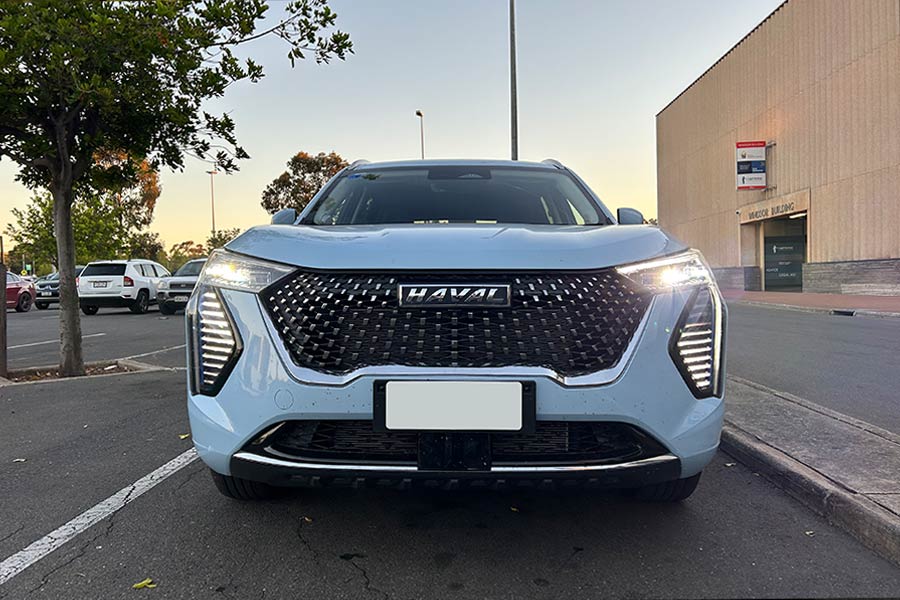
In our case, we’re at the pointy end of the scale, with the Jolion Ultra Hybrid priced at $41,485 drive-away by the time you’ve added its eye-catching Glacier Blue paint job ($495), a premium colour offered only on hybrid-powered models.
That pale blue i30 N-esque colour is rather handsome, and if you’re lucky like us, you’re bound to get a few compliments.
The flagship Jolion Ultra Hybrid comes equipped with 18-inch alloy wheels, LED headlights with sequential daytime running lights (DRLs), a panoramic sunroof, keyless entry with push-button start, tinted windows, heated front seats, a colour head-up display, 7.0-inch digital instrument cluster and a 12.3-inch central touchscreen with smartphone mirroring, AM/FM radio and Bluetooth connectivity.
In terms of safety, there’s seven air bags, including a front centre airbag, as well as blind spot monitoring, lane keep assist, adaptive cruise control, brake assist, forward collision warning, traffic sign recognition, autonomous emergency braking (AEB) with pedestrian and cyclist detection and more.
Apowered tailgate, ventilated front seats and in-built satellite navigation are conspicuously absent, which we would like to see at this price point.
Under the bonnet, petrol-electric versions of the Jolion are powered by a 70kW/125Nm 1.5-litre naturally aspirated four-cylinder petrol engine mated to a 110kW electric motor, which produce combined outputs of 139kW of power and 375Nm of torque.
Drive is sent to the front wheels via a dedicated hybrid-only automatic transmission.
According to GWM, average fuel consumption is claimed to be 5.0L/100km on a combined cycle, while the 1530kg SUV can accelerate from 0-100km/h in a respectable 8.2 seconds.
What’s good about the GWM Haval Jolion Ultra Hybrid?
On paper, there’s a lot to like about the 2024 GWM Haval Jolion Ultra Hybrid with a generous list of standard equipment and good value for money.
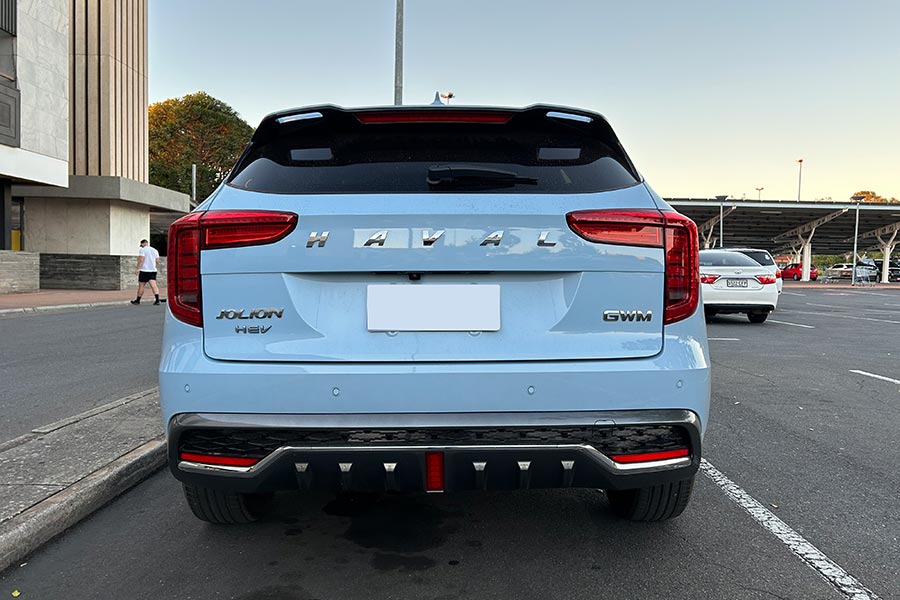
It also lives up to the promise in terms of how it drives. The Jolion is a genuinely pleasant machine to travel around in, thanks to light (albeit vague) steering, decent get-up-and-go from its hybrid powertrain and a reasonably well-sorted ride – not something that can be said about some vehicles coming out of China.
The Jolion Hybrid feels resolved around town and tackles bigger lumps and bumps with confidence and without throwing around your passengers too much. There’s a sense of poise to the way it corners, but it could be a little more resolved in stop-start traffic: you don’t have to accelerate too hard out to send it into wheel-spinning mayhem.
With its self-charging hybrid set-up, there’s no need to worry about charging stations or cables, but unlike some other hybrid cars (including the Toyota RAV4), there’s no specific button to allow you to drive in EV-only mode at low speeds.
Admittedly, though, it does a great job of making all the powertrain decisions, shifting seamlessly between petrol and electricity.
If you couldn’t hear the droning of the petrol engine or the almost imperceptible buzz of electricity, it’s difficult to know which engine is doing the heavy lifting. That’s a good thing.
With a full tank of fuel, the instrument cluster shows an estimated 900km of driving range, and for a good while we thought the digital fuel gauge was faulty because it seemed like forever before the fuel bars started to drop.
But we couldn’t match GWM’s 5.0L/100km consumption claim and the only comprehendible figure we could get from the touch-screen’s various menus and sub-menus was 9.0L/100km and 4.1kWh/100km.
Still, that’s much better than some other figures it gave us at various times: 1512.0L (and 5.8kWh), 1962.6L (and 5.9kWh), and our favourite, 22586.0L/100km (and 0.0kWh).
Clearly, some tech (or user) issues going on and we’ve reached out to GWM for an explanation.
It’s frustrating that you can’t view fuel consumption (beyond instantaneous numbers) on the instrument cluster, and diving into the convoluted graphs and tables in the touch screen leaves you (or at least me) perplexed.
That aside, there’s loads of tech packed into an otherwise minimalist cabin, where there’s enough room for four average-sized adults to get around comfortably.
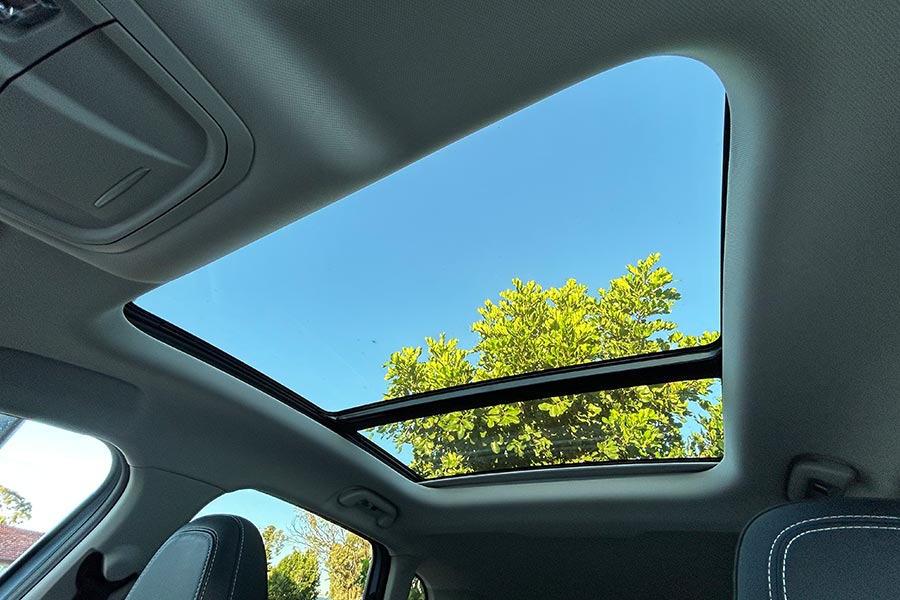
The second row offers plenty of legroom and headroom, even with that big panoramic sunroof, along with two USB-A ports, air vents, a centre arm rest and ISOFIX child seat anchorage points on the outboard seats.
What’s not so good about the GWM Haval Jolion Ultra Hybrid?
For all the positives, we encountered a few annoyances during our time with the 2024 GWM Haval Jolion Ultra Hybrid.
They probably won’t be deal breakers but, for starters, you only get one full-size cup holder in the centre console, along with a smaller piccolo-sized space next to it. That means you’ll have to fight the front passenger if you’ve both ordered a large, iced latte… a common occurrence in our household.
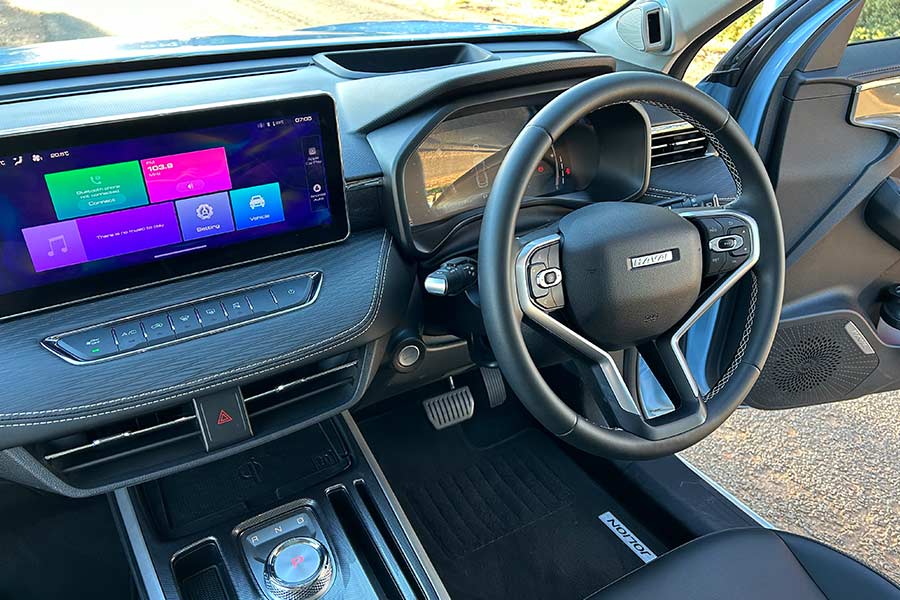
Another gripe relates to the infotainment unit. The large 12.3-inch unit itself is clear and responsive, but it needs more shortcut buttons, or perhaps physical buttons to navigate through the functions easier.
For example, if you’re using Apple CarPlay for maps and you want to adjust the climate control, you can hit a shortcut button to take you to a climate menu, but there’s a lot of fiddling to get back to the CarPlay screen, which is both distracting and irritating.
Meanwhile, there’s only one way to control volume and that’s via buttons on the steering wheel, meaning front passengers have to reach over and disturb the driver (which is dangerous) if they need to control the volume.
Other tech concerns include the hit-and-miss keyless entry. Some days it was fine, while on several occasions I had to dig through several bags to find the key fob to unlock it manually. Ah, the good old days…
The budget-friendly pleather (faux leather) seats get extremely hot in the summer heat – due in part to a mesh-only sun blind in the panoramic roof, which doesn’t fully block out the sun – and, with no seat ventilation, you end up sitting in a pool of sweat after a short while.
On the plus side, the dual-zone climate control cools the cabin quickly.
We also experienced some quality concerns, such as when the parcel tray in the boot refused to stay in place because the looped strings that are supposed to hold it up didn’t remain fastened.
Elsewhere, the steering wheel (also faux leather) feels rather cheap and the wheel itself can’t be adjusted for reach, just tilt, which is no good for those with short limbs.
In terms of driving the Jolion Ultra Hybrid, there isn’t much to complain about.
It’s effortless and surprisingly competent on the road, however low-speed manoeuvres are hindered by the inconsistent rotary gear selector that seems to require an unnecessary amount of brake force before it allows you to go from drive to reverse and vice versa. Three-point turns can be frustrating.
Another frustrating experience is the adaptive cruise control’s inconsistent performance, which will randomly slow down (below your set speed), particularly on multi-lane motorways, and with nothing (cars, bikes, trucks, pedestrians, birds) around.
Should I buy a GWM Haval Jolion Ultra Hybrid?
The 2024 GWM Haval Jolion Ultra Hybrid is impressive in many ways.
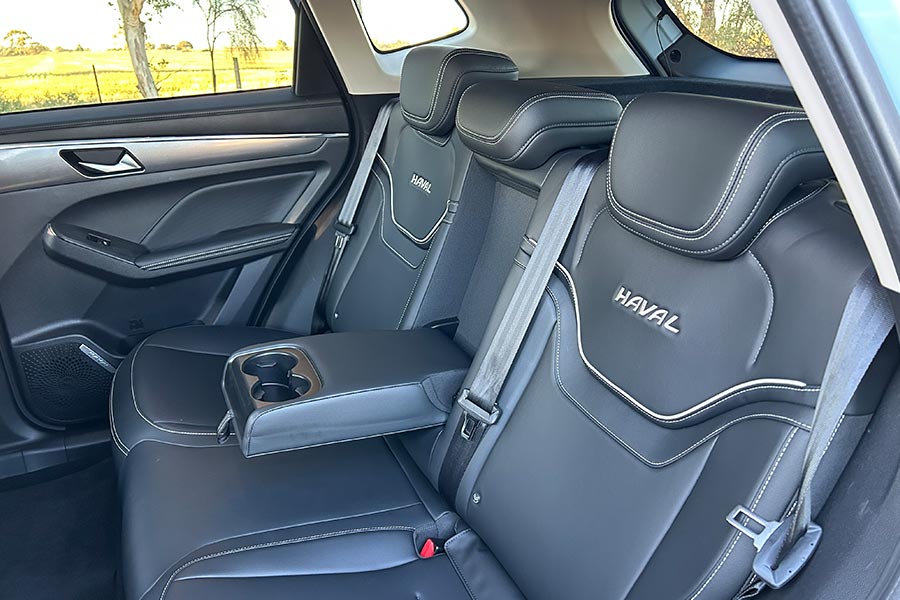
At its core, it is an affordable, compact SUV that is both spacious and loaded with equipment and delivers a decent driving experience with respectable fuel economy.
It’s also affordable to service and run, backed by GWM’s generous seven-year/unlimited-kilometre warranty (battery covered for eight years/unlimited).
It’s not perfect though, and this is an SUV that presents great value for money for those able to live with its quirks.
2024 GWM Haval Jolion Ultra Hybrid at a glance:
Editor’s Rating: 7.5/10
| Price: $40,990 (drive-away) |
Transmission: Two-speed automatic |
| Available: Now |
Fuel: 5.0L/100km (ADR Combined) |
| Powertrain: 1.5-litre four-cylinder petrol-electric |
CO2: 116g/km (ADR Combined) |
| Output: 70kW/125Nm (electric motor: 110kW/250Nm) |
Safety Rating: Five-star (ANCAP 2022) |
| Combined output: 139kW/375Nm |
Disclaimer: Images supplied by Carsales.
This article was prepared by an independent author. The information contained in this article represents the views and opinions of the original author, and is based on research carried out by the original author. The appearance of the article on Maxxia's website does not constitute an endorsement of its content by Maxxia in any way. The article has been made available for informational purposes only and should not be taken as advice. While all reasonable care has been taken to ensure that the statements made by the original author in the article are fair and accurate, Maxxia does not guarantee or warrant the accuracy or completeness of this information and will not be liable for, or in connection with, any loss or damage suffered as a result of any inaccuracies, errors or omissions or your reliance on this information. You should independently research and verify information before making any decision in respect of a vehicle.


